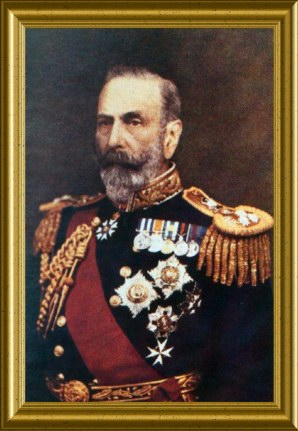 From three articles on Wikipedia, the free encyclopedia (Royal and Noble Ranks, Royal and Noble Styles and Styles and Titles of Peers):
From three articles on Wikipedia, the free encyclopedia (Royal and Noble Ranks, Royal and Noble Styles and Styles and Titles of Peers): 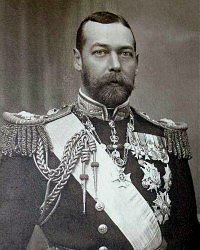 e.g. Wrede)
e.g. Wrede) 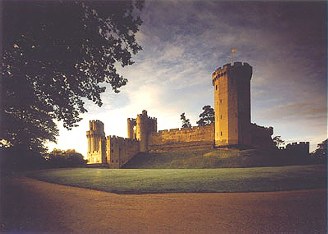 regular nobility, those whose titles derived from the Holy Roman Empire ranked higher than those whose titles were granted by one of the German princes after 1806, no matter what title was held.
regular nobility, those whose titles derived from the Holy Roman Empire ranked higher than those whose titles were granted by one of the German princes after 1806, no matter what title was held.English
|
French
|
Italian
|
Spanish
|
German
|
Dutch
|
Norwegian
|
Swedish
|
Czech
|
Slovak
|
Finish[6]
|
Polish[7]
|
Russian
|
Danish
|
Greek
|
Portuguese[8]
|
Slovene
|
Latin[9]
|
Emperor,
Empress
|
Empereur,
Imperatrice
|
Imperatore,
Imperatrice
|
Emperador,
Emperatriz
|
Kaiser,
Kaiserin
|
Keizer,
Keizerin
|
Keiser,
Keiserinne
|
Kejsare,
Kejsarinna
|
Císar,
Císarovna
|
Cisár,
Cisárovná
|
Keisari,
Keisarinna (or Keisaritar, obsolete)
|
Cesarz,
Cesarzowa
|
Imperator/Tsar,
Imperatritsa/
Tsaritsa
|
Kejser,
Kejserinde
|
Aftokrator,
Aftokratira
|
Imperador,
Imperatriz
|
Cesar,
Cesarica
|
Imperator/Caesar,
Imperatrix/
Caesarina
|
King,
Queen
|
Roi,
Reine
|
Re,
Regina
|
Rey,
Reina
|
König,
Königin
|
Koning,
Koningin
|
Konge,
Dronning
|
Kung,
Drottning
|
Král,
Královna
|
Král,
Královná
|
Kuningas,
Kuningatar
|
Król,
Królowa
|
Koról,
Koroléva
|
Konge
Dronning
|
Vasilefs,
Vasilissa
|
Rei,
Rainha
|
Kralj,
Kraljica
|
Rex,
Regina
|
Grand Duke/
Grand Prince,
Grand Duchess/
Grand Princess
|
Grand Duc,
Grande Duchesse
|
Granduca,
Granduchessa
|
Gran Duque,
Gran Duquesa
|
Großherzog/
Großfürst,
Großherzogin/
Großfürstin
|
Groothertog,
Groothertogin
|
Storhertug,
Storhertuginne
|
Storfurste,
Storfurstinna
|
Velkovévoda,
Velkovévodkyne
|
Velkovojvoda,
Velkovojvodkyna
|
Suuriruhtinas,
Suuriruhtinatar
|
Wielki Ksiaze,
Wielka Ksiezna
|
Velikiy Knyaz,
Velikaya Kniagina
|
Storhertug,
Storhertuginde
|
Megas Doux, Megali Doukissa
|
Grão-Duque,
Grã-Duquesa
|
Veliki vojvoda,
Velika vojvodinja
|
Magnus Dux/ Magnus Princeps,
magna ducissa, magna principissa
|
Archduke,
Archduchess
|
Archiduc, Archiduchesse
|
Arciduca,
Arciduchessa
|
Archiduque,
Archiduquesa
|
Erzherzog,
Erzherzogin
|
Aartshertog,
Aartshertogin
|
Erkehertug,
Erkehertuginne
|
Ärkehertig,
Ärkehertiginna
|
Arcivévoda,
Arcivévodkyne
|
Arcivojvoda,
Arcivojvodkyna
|
Arkkiherttua,
Arkkiherttuatar
|
Arcyksiaze
Arcyksiezna
|
Ertsgertsog,
Ertsgertsoginya
|
Ærke Hertug,
Ærke Hertuginde
|
Archidoux, Archidoukissa
|
Arquiduque,
Arquiduquesa;
|
Nadvojvoda,
Nadvojvodinja
|
Archidux,
archiducissa
|
(Prince)-Elector,
Electress
|
Prince-électeur,
Princesse-électrice
|
Principe Elettore,
Principessa Elettrice
|
Príncipe Elector,
Princesa Electora;
|
Kurfürst,
Kurfürstin
|
Keurvorst,
Keurvorstin
|
Kurfyrste,
Kurfyrstinne
|
Kurfurste
Kurfurstinna
|
Kurfirt
|
-
|
Vaaliruhtinas,
Vaaliruhtinatar
|
Ksiaze Elektor,
Ksiezna Elektorowa
|
Kurfyurst,
Kurfyurstina
|
Kurfyrste,
Kurfystinde
|
Pringkips-Eklektor
Pringkipissa-Eklektorissa
|
Príncipe-Eleitor,
Princesa-Eleitora;
|
Volilni knez,
Volilna kneginja
|
Princeps Elector
|
Prince[10],
Princess
|
Prince[10],
Princesse
|
Principe[10],
Principessa
|
Príncipe[10],
Princesa
|
Prinz/Fürst,
Prinzessin/
Fürstin[11]
|
Prins/Vorst,
Prinses/
Vorstin
|
Prins/Fyrste,
Prinsesse/
Fyrstinne
|
Prins/Furste,
Prinsessa/
Furstinna[12]
|
Kníže,
Knežna10
|
Knieža,
Knažná
|
Prinssi/
Ruhtinas,
Prinsessa/
Ruhtinatar[12]
|
Ksiaze,
Ksiezna
|
Kniaz/Gertsog,
Kniagina/
Gertsoginya[13]
|
Prins/Fyrste
Prinsesse/
Fyrstinde
|
Pringkips
Pringkipissa
|
Príncipe,
Princesa
|
Knez,
Kneginja
|
Princeps,
principissa
|
Duke,
Duchess
|
Duc,
Duchesse
|
Duca,
Duchessa
|
Duque,
Duquesa
|
Herzog,
Herzogin
|
Hertog,
Hertogin
|
Hertug,
Hertuginne
|
Hertig,
hertiginna
|
Vévoda,
Vévodkyne
|
Vojovda,
Vojvodkyna
|
Herttua,
Herttuatar
|
Diuk (Ksiaze),
(Ksiezna)
|
Hertug
Hertuginde
|
Doukas/
Archon
Doux/
Archontissa
|
Duque,
Duquesa
|
Vojvoda,
Vojvodinja
|
Dux,
ducissa
|
|
Marquess/
Margrave,
Marchioness/
Margravine
|
Marquis,
Marquise
|
Marchese,
Marchesa
|
Marqués,
Marquesa
|
Markgraf[14],
Markgräfin
|
Markies/
Markgraaf,
Markiezin/
Markgravin
|
Marki,
Markise
|
Markis/
Markgreve,
Markisinna/
Markgrevinna[12]
|
Markýz/
Markrabe[15]
|
Markíz,
Markíza
|
Markiisi/
Rajakreivi,
Markiisitar/
Rajakreivitär
|
Markiz/
Margrabia,
Markiza/
Margrabina
|
Markiz,
Markiza,
Boyar,
Boyarina[13]
|
Markis,
Markise
|
Markissios,
Markissia
|
Marquês,
Marquesa
|
Markiz,
Markiza
|
Marchio,
marchionissa
|
Earl / Count,
Countess
|
Comte,
Comtesse
|
Conte,
Contessa
|
Conde,
Condesa
|
Graf,
Gräfin
|
Graaf,
Gravin
|
Jarl /Greve,
Grevinne
|
Greve,
Grevinna
|
Hrabe,
Hrabenka
|
Gróf,
Grófka
|
Kreivi/
(brit:)jaarli,
Kreivitär[12]
|
Hrabia,
Hrabina
|
Graf,
Grafinya[13]
|
Greve
Grevinde, Komtesse
|
Komis,
Komissa
|
Conde,
Condessa[16]
|
Grof,
Grofica
|
Comes,
comitissa
|
Viscount,
Viscountess
|
Vicomte,
Vicomtesse
|
Visconte,
Viscontessa
|
Vizconde,
Vizcondesa
|
Vizegraf,
Vizegräfin
|
Burggraaf,
Burggravin
|
Vikomte,
Visegrevinne
|
Vicegreve,
vicegrevinna
|
Vikomt
|
Vikomt,
Vikontesa
|
Varakreivi,
Varakreivitär
|
Wicehrabia,
Wicehrabina
|
Vikont,
Vikontessa
|
Vicegreve,
Vicegrevinde/
Vicekomtesse
|
Ypokomis, Ypokomissa
|
Visconde,
Viscondessa
|
Vikont,
Vikontinja
|
Vicecomes,
vicecomitissa
|
Baron,
Baroness
|
Baron,
Baronne
|
Barone,
Baronessa
|
Barón,
Baronesa
|
Freiherr/Baron,
Freifrau/
Freiherrin/
Baronin
|
Baron,
Barones(se)
|
Baron,
Baronesse
|
Friherre,
Friherrinna
|
Baron,
Baronka
|
Barón,
Barónka
|
Vapaaherra/
Paroni,
Vapaaherratar/
Paronitar[12]
|
Wolny Pan,
Wolna Pani
|
Baron,
Baronessa
|
Baron,
Baronesse
|
Varonos,
Varoni
|
Barão,
Baronesa
|
Baron,
Baronica
|
Liber baro,
baronissa
|
Baron,
Baroness
|
Baron,
Baronne
|
Barone,
Baronessa
|
Barón,
Baronesa
|
Baron, Herr,
Baronin, Frau
|
Baron,
Barones(se)
|
Baron,
Baronesse
|
Baron, Herre,
Baronessa, Fru
|
Baron,
Baronka
|
Barón,
Barónka
|
Paroni, Herra,
Paronitar, Rouva/ Herratar[12]
|
Baron,
Baronowa
|
Baron,
Baronessa
|
Baron,
Baronesse
|
Varonos,
Varoni
|
Barão,
Baronesa
|
Baron,
Baronica
|
Baro,
baronissa
|
Baronet[17]
Baronetess
|
Baronnet
|
Baronetto
|
 |
Edler,
Edle
|
Erfridder
|
 |
 |
Baronet
|
 |
Baronetti, "Herra" (=fiefholder),
Herratar
|
Baronet
|
Baronet
|
Baronet,
Baronetesse
|
Baronetos, Baroneta
|
Baronete,
Baronetesa;
|
Baronet,
Baronetinja
|
 |
Knight[18]
|
Chevalier
|
Cavaliere
|
Caballero
|
Ritter
|
Ridder
|
Ridder
|
Riddare/ Frälseman,
Fru[12]
|
Rytír
|
Rytier
|
Aatelinen/Ritari[12]
style of wife: Rouva
|
Rycerz/ Kawaler
|
Rytsar
|
Ridder
|
Hippotis
|
Cavaleiro
|
Vitez
|
Eques
|
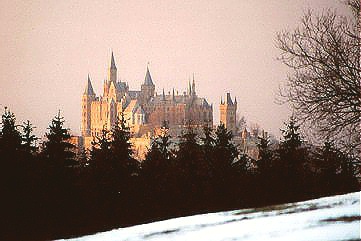
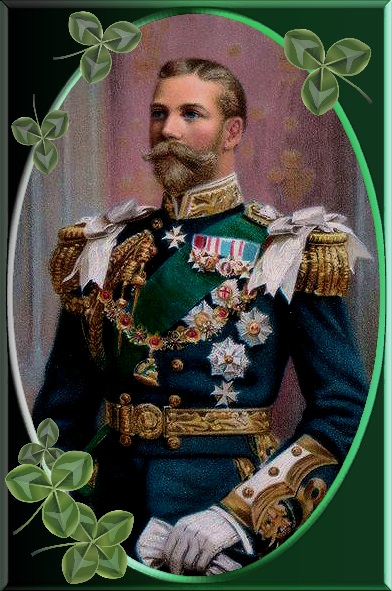 Styles represent the fashion by which monarchs and noblemen are properly addressed. Throughout history, many different styles were used, with little standardization. This page will detail the various styles used by royalty and nobility in Europe, in the final form arrived at in the nineteenth century.
Styles represent the fashion by which monarchs and noblemen are properly addressed. Throughout history, many different styles were used, with little standardization. This page will detail the various styles used by royalty and nobility in Europe, in the final form arrived at in the nineteenth century.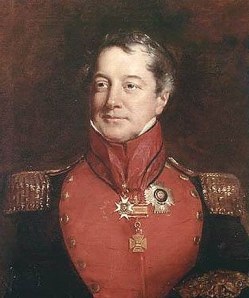
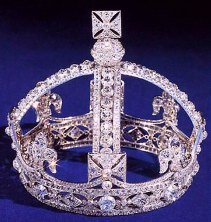 Addressing Nobility or Royalty depends on the Style use by the particular personage and ones country. However, generally speaking, with a reigning or "de jure" King or Queen, you would use, “Your Majesty.” If a Royal, it would be, “Your Royal Highness.” If a Noble, there could be a number of different styles, such as, “Your Serene Highness,” “Your Excellency,” “Your Grace,” “Your Right Honorable,” or something else depending on the title and country involved. It would be best if you find out about what is appropriate ahead of time so as not to be awkward or clumsy.
Addressing Nobility or Royalty depends on the Style use by the particular personage and ones country. However, generally speaking, with a reigning or "de jure" King or Queen, you would use, “Your Majesty.” If a Royal, it would be, “Your Royal Highness.” If a Noble, there could be a number of different styles, such as, “Your Serene Highness,” “Your Excellency,” “Your Grace,” “Your Right Honorable,” or something else depending on the title and country involved. It would be best if you find out about what is appropriate ahead of time so as not to be awkward or clumsy. Position or title:
|
On an
envelope:
|
In a letter:
|
Verbally or face to face:
|
King
|
HM The King
|
Your Majesty
|
Your Majesty, and thereafter as "Sir/Sire"
|
Queen
|
HM The Queen
|
Your Majesty
|
Your Majesty, and thereafter as "Ma'am"
|
Prince of Wales
|
HRH The Prince of Wales
|
Your Royal Highness
|
Your Royal Highness, and thereafter as "Sir"
|
Wife of the Prince of Wales
|
HRH The Princess
of Wales
|
Your Royal Highness
|
Your Royal Highness, and thereafter as "Ma'am"
|
Princess Royal
|
HRH The Princess Royal
|
Your Royal Highness
|
Your Royal Highness, and thereafter as "Ma'am"
|
Royal Peer
|
HRH The Duke of London eg. (HRH
The Duke of Kent)
|
Your Royal Highness
|
Your Royal Highness, and thereafter as "Sir"
|
Royal Peeress
|
HRH The Duchess
of London eg. (HRH
The Duchess of Kent)
|
Your Royal Highness
|
Your Royal Highness, and thereafter as "Ma'am"
|
Sovereign's son
(unless a peer)
|
HRH The Prince John, eg. (HRH The Prince Edward)
|
Your Royal Highness
|
Your Royal Highness, and thereafter as "Sir"
|
Sovereign's son's wife
(unless a peeress)
|
HRH The Princess John
|
Your Royal Highness
|
Your Royal Highness, and thereafter as "Ma'am"
|
Sovereign's daughter
(unless a peeress)
|
HRH The Princess Mary,eg. (HRH The Princess Anne)
|
Your Royal Highness
|
Your Royal Highness, and thereafter as "Ma'am"
|
Sovereign's son's son,
Prince of Wales's eldest son's eldest son
(unless a peer)
|
HRH Prince John of London, eg (Prince Michael of Kent)
|
Your Royal Highness
|
Your Royal Highness, and thereafter as "Sir"
|
Sovereign's son's son's wife
(unless a peeress)
|
HRH Princess John of London, eg (Princess Michael
of Kent)
|
Your Royal Highness
|
Your Royal Highness, and thereafter as "Ma'am"
|
Sovereign's son's daughter
(unless a peeress)
|
HRH Princess Mary of London, eg (Princess Beatrice
of York)
|
Your Royal Highness
|
Your Royal Highness
|
Sovereign's son's son's son
(unless a peer)
|
Lord John Windsor,
eg (Lord Nicholas Windsor)
|
Dear Lord
John
|
Lord John
|
Sovereign's son's son's son's wife
(unless a peeress)
|
Lady John Windsor,
eg (Lady Nicholas Windsor)
|
Dear Lady
John
|
Lady John
|
Sovereign's son's son's daughter
(unless a peeress)
|
The Lady Mary Windsor, eg (The
Lady Helen Taylor)
|
Dear Lady
Mary
|
Lady Mary
|
Nobility:
|
|||
Peers and peeresses
|
|||
Duke
|
His Grace The Duke of London
|
My Lord Duke or Dear Duke
(of London)
|
Your Grace or
Duke[citation needed]
|
Duchess
|
Her Grace The Duchess of London
|
Madam or
Dear Duchess (of London)
|
Your Grace or
Duchess[citation needed]
|
Marquess or Marquis
|
The Most Hon. The Marquess of
London
|
My Lord Marquess or
Dear Lord London
|
My Lord or
Your Lordship or
Lord London
|
Marchioness
|
The Most Hon. The Marchioness of London
|
Madam or
Dear Lady London
|
My Lady[citation needed] or
Your Ladyship or
Lady London
|
Earl
|
The Rt Hon. The
Earl of London
|
My Lord or
Dear Lord London
|
My Lord or
Your Lordship or
Lord London
|
Countess
|
The Rt Hon. The Countess of
London
|
Madam or
Dear Lady London
|
My Lady[citation needed]or
Your Ladyship or
Lady London
|
Viscount
|
The Rt Hon. The Viscount London
|
My Lord or
Dear Lord London
|
My Lord or
Your Lordship or
Lord London
|
Viscountess
|
The Rt Hon. The Viscountess
London
|
Madam or
Dear Lady London
|
My Lady[citation needed]or
Your Ladyship or
Lady London
|
Baron
Lord of Parliament
|
The Rt Hon. The Lord London
|
My Lord or
Dear Lord London
|
My Lord or
Your Lordship or
Lord London
|
Baroness (in her own right)
|
The Rt Hon. The Lady London or
The Rt Hon. The Baroness London
|
Madam or
Dear Lady London or
Dear Baroness London
|
My Lady[citation needed]or
Your Ladyship or
Lady London or
Baroness London
|
Baroness (in her husband's right)
Lady of Parliament (in her or
her husband's right)
|
The Rt Hon. The Lady London
|
Madam or
Dear Lady London
|
My Lady[citation needed]or
Your Ladyship or
Lady London
|
Eldest sons of dukes, marquesses and earls:
|
|||
(Eldest sons of dukes, marquesses and earls use their fathers' highest secondary titles as courtesy titles. Eldest daughters do not have courtesy titles; all courtesy peeresses are wives of courtesy peers.)
|
|||
Courtesy: Marquess
|
Marquess of London
|
My Lord Marquess or
Dear Lord London
|
My Lord or
Lord London
|
Courtesy: Marchioness
|
Marchioness of London
|
Madam or
Dear Lady London
|
My Lady or
Lady London
|
Courtesy: Earl
|
Earl of London
|
My Lord or
Dear Lord London
|
My Lord or
Lord London
|
Courtesy: Countess
|
Countess of
London
|
Madam or
Dear Lady London
|
My Lady or
Lady London
|
Courtesy: Viscount
|
Viscount London
|
My Lord or
Dear Lord London
|
My Lord or
Lord London
|
Courtesy: Viscountess
|
Viscountess
London
|
Madam or
Dear Lady London
|
My Lady or
Lady London
|
Courtesy: Baron
Courtesy: Lord of Parliament
|
Lord London
|
My Lord or
Dear Lord London
|
My Lord or
Lord London
|
Courtesy: Baroness
Courtesy: Lady of Parliament
|
Lady London
|
Madam or
Dear Lady London
|
My Lady or
Lady London
|
Heirs-apparent and heirs-presumptive of Scottish peers:
|
|||
(Heirs-apparent and heirs-presumptive of Scottish peers use the titles "Master" and "Mistress"; these are substantive, not courtesy titles. If, however, the individual is the eldest son of a Duke, Marquess or Earl, then he uses the appropriate courtesy title, as noted above.)
|
|||
Scottish peer's heir-apparent
or heir-presumptive
|
The Master of Edinburgh
|
Sir or
Dear Master of Edinburgh
|
Sir or
Master
|
Scottish peer's heiress-
apparent or heiress-
presumptive
|
The Mistress of Edinburgh
|
Madam or
Dear Mistress of Edinburgh
|
Madam or
Mistress
|
Sons of peers:
|
|||
Duke's younger son
Marquess's younger son
|
Lord John Smith
|
My Lord or
Dear Lord John (Smith)
|
My Lord or
Lord John
|
Duke's younger son's wife
Marquess's younger son's
wife
|
Lady John Smith
|
Madam or
Dear Lady John
|
My Lady or
Lady John
|
Earl's younger son
Viscount's son
Baron's son
Lord of Parliament's son
|
The Hon. John
Smith
|
Sir or
Dear Mr Smith
|
Sir or
Mr Smith
|
Earl's younger son's wife
Viscount's son's wife
Baron's son's wife
Lord of Parliament's son's
wife
|
The Hon. Mrs John Smith
|
Madam or
Dear Mrs Smith
|
Madam or
Mrs Smith
|
Daughters of peers:
|
|||
(If a peer's daughter marries another peer or courtesy peer, she takes her husband's rank. If she marries anyone else, she keeps her rank and title, using her husband's surname instead of her maiden name.)
|
|||
Duke's daughter
Marquess's daughter
Earl's daughter
(unmarried or married to a commoner)
|
The Lady Mary Smith (if unmarried), The Lady Mary Brown (Husband Surname, if Married)
|
Madam or
Dear Lady
Mary
|
My Lady or
Lady Mary
|
Viscount's daughter
Baron's daughter
Lord of parliament's daughter
(unmarried)
|
The Hon. Mary
Smith
|
Madam or
Dear Miss
Smith
|
Madam or
Miss Smith
|
Viscount's daughter
Baron's daughter
Lord of parliament's daughter
(married to a commoner)
|
The Hon. Mrs
Brown (Husband Surname)
|
Madam or
Dear Mrs
Brown
|
Madam or
Mrs Brown
|
Scottish Barons (non-peerage Barons):
|
|||
Scottish Baron
|
The Much Honoured John Smith of Edinburgh or The Much Honoured Baron of Edinburgh
|
Sir or Dear Edinburgh
|
Edinburgh or Baron
|
Scottish Baroness
|
The Much
Honoured
Baroness of Edinburgh
|
Madam or Baroness
|
As on envelope
|
Scottish Baron's wife
|
Lady Edinburgh or Madam
|
As on envelope
|
As on envelope
|
Gentry:
|
|||
Baronet
|
(The Hon.) Sir John Smith, Bt (or Bart.)
|
Sir or
Dear Sir John (Smith)
|
Sir or
Sir John
|
Baronetess in her own right
|
Dame Mary Smith, Btss
|
Madam or
Dear Dame Mary (Smith)
|
Madam or
Dame Mary
|
Baronet's wife
|
Lady Smith
|
Madam or
Dear Lady Smith
|
My Lady or
Lady Smith
|
Knights:
|
|||
Knight (of any order)
|
Sir John Smith
|
Sir or
Dear Sir John (Smith)
|
Sir or
Sir John
|
Lady (of the Order of the
Garter or the Thistle)
|
Lady Mary Smith
|
Madam or
Dear Lady
Mary (Smith)
|
My Lady or
Lady Mary
|
Dame (of an order other
than the Garter or the Thistle)
|
Dame Mary Smith
|
Madam or
Dear Dame Mary (Smith)
|
Madam or
Dame Mary
|
Knight's wife
|
Lady Smith
|
Madam or
Dear Lady Smith
|
My Lady or
Lady Smith
|
Scottish chiefs and lairds:
|
|||
Chief
|
John Smith of Smith or John Smith of Edinburgh or
John Smith of that
Ilk or The Smith of Smith or The Smith of Edinburgh or
The Smith (varies according to family)
|
Sir or Dear Smith (if placename in title) or Dear Smith (otherwise)
|
Edinburgh (if placename in
title) or Smith (otherwise)
|
Female Chief or laird
Chief or Laird
|
As Chief/Laird,
substituting "Mrs"
or "Madam"
for first name or
"The"
|
Madam or
as on
envelope
|
Madam or
as on
envelope
|
Chief (etc.)'s heir-apparent
|
John Smith of Edinburgh, yr or
John Smith, yr of Edinburgh or
John Smith of Edinburgh or
(last only if different first name to father)
|
Sir or
Dear Mr Smith of Edinburgh
|
Sir or
Mr Smith of Edinburgh
|
Chief (etc.)'s heir-apparent's
wife
|
Mrs Smith of Edinburgh, yr or
Mrs Smith, yr of Edinburgh
|
Madam or
Dear Mrs
Smith of Edinburgh
|
Madam or
Mrs Smith
of Edinburgh
|
Chief (etc.)'s eldest daughter (if none senior)
|
Miss Smith of Edinburgh
|
Madam or
Dear Miss
Smith of Edinburgh
|
Madam or
Miss Smith
of Edinburgh
|
Chief (etc.)'s younger daughter
|
Miss Mary Smith of Edinburgh
|
Madam or
Dear Miss
Smith of Edinburgh
|
Madam or
Miss Smith
of Edinburgh
|
Clergy:
|
|||
Church of England
Similar styles are also applied to clergy of equivalent status in other religious organisations.
|
|||
Archbishop
|
The Most Rev. and
Rt Hon. The Lord Archbishop of Canterbury
|
Dear Archbishop
|
Your Grace or
Archbishop
|
Archbishop that is not in Privy Council
|
The Most Rev.
John Smith
|
Dear Archbishop
|
Your Grace or
Archbishop
|
Diocesan bishop in Privy Council
|
The Rt Rev. and Rt Hon. The Lord Bishop of London
|
Dear Bishop
|
My Lord or
Bishop
|
Diocesan bishop
|
The Rt Rev. The
Lord Bishop of London
|
Dear Bishop
|
My Lord or
Bishop
|
Bishop
|
The Rt Rev. The Bishop of London
or The Rt Rev. The Lord Bishop of London
|
Dear Bishop
|
My Lord or
Bishop
|
Dean
|
The Very Rev. The Dean of London
|
Dear Mr/Mrs
/Ms Dean
|
Dean
|
Provost
|
The Very Rev. The Provost of London
|
Dear Provost
|
Provost
|
Archdeacon
|
The Ven. The Archdeacon of London
|
Dear Archdeacon
|
Archdeacon
|
Prebendary
|
The Rev. Prebendary Smith
|
Dear Prebendary Smith
|
Prebend
|
Canon
|
The Rev. Canon John Smith
|
Dear Canon
|
Canon
|
Priest (a vicar or rector)
|
The Rev. John
Smith or Father
John Smith
|
Dear Mr/Mrs
/Ms Smith or
Dear Father Smith
|
Mr/Mrs/Ms Smith or Father John Smith/John/Smith or Vicar/Rector /Curate/Chaplain etc. as applicable
|
Deacon
|
The Rev. Deacon John Smith or
The Rev. John Smith
|
Dear Mr/Mrs
/Ms Smith or
Dear Deacon Smith
|
Deacon Smith or Mr/Mrs/Ms Smith
|
The usage 'Lord' as applied to a bishop pre-dates the United Kingdom, and is a well-established convention.
Church of Scotland:
|
|||
Lord High Commissioner to
the General Assembly Clergy
|
His Grace The Lord High Commissioner
|
Your Grace
|
Your Grace
|
The Rev. John
Smith
|
Dear Mr Smith
|
Mr Smith
|
|


